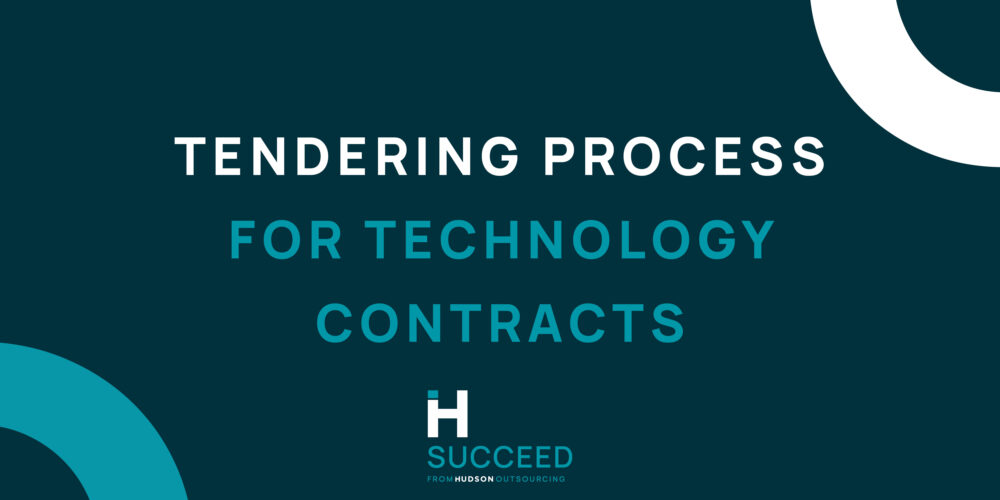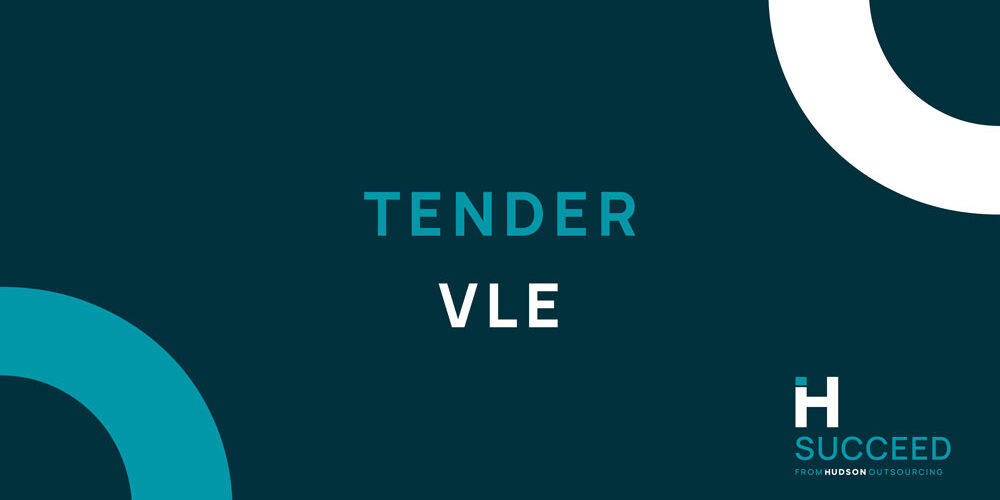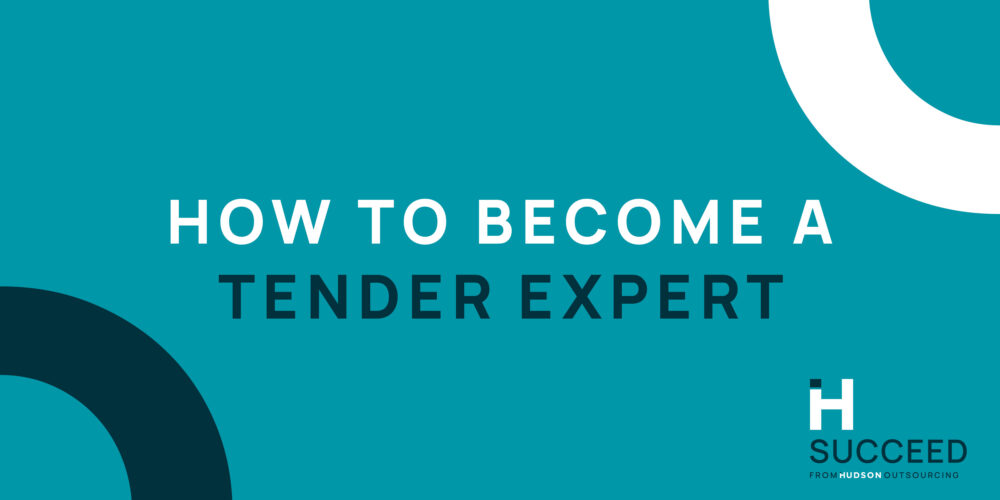Tender Design Advice from our Head of Creative
Last updated: Dec 17, 2021 @ 11:59 am
Tender design is something which companies often overlook when developing responses. Here at Hudson, we understand the importance that design plays in tendering and the benefits this can bring to your tender scores. Kathryn Johansen heads up our creative team here at Hudson and is responsible for working alongside our Succeed division in ensuring that the responses we develop are creative, high quality and bespoke to our client’s branding.
She has over 10 years’ experience working in the creative sector and has worked alongside companies from multiple different sectors, ensuring high quality, creative and innovative content is designed and produced. Today, we sit down with Kathryn to discuss how your company should approach tender design and the many benefits that this can bring to you and your company. Kat has shared some basic points to make sure you’re aware of how a well-designed proposal can support your efforts in tendering:
Read the tender brief
First and foremost, read the tender brief.
Many buyers can be very strict in their specifications and state that your submissions must be in 12-point Ariel, for example.
If you go through the effort of developing a beautifully designed and intricate piece of work without realising that the buyer has specified that this is prohibited, this may result in your tender being excluded from further evaluation.
No matter how detailed and thorough your tender responses are if you have overlooked this, this will reflect to the buyer that you have a sloppy approach to work and have not taken the time or care it requires to go over tender documents.
Now, this may well be obvious. For example, let’s say you are a creative agency submitting a response for a website design that already contains an element of creativity needed, then it will be likely that you will be able to add an element of design into your response. However, always verify that this is the case before going ahead and spending precious time developing design work which may go to waste.
It may be the case that some buyers will specify some formatting limits you must adhere to. For example, whilst the buyer may be looking for designed work to be completed, they may also specify that this design is accompanied by a specific word count, so make sure this is verified before beginning your tender design work.
Content
Now it may seem strange that we are talking about content in our discussion on tender design work, however, this is a crucial factor in seeing success.
The key thing to consider when creating your tender design is that the content is the core of your proposal, whilst the design should be there to enhance the content that you develop.
This can be particularly necessary when developing really detailed technical responses.
For example, let’s say you are developing a proposal for structural engineering and how you will deliver consultancy to the construction of a bridge, then it goes without saying that your main focus should be on the content.
In this instance, design work will act to enhance your proposal, not substitute the effort needed for the quality aspect of your work.
What can be key here when looking to enhance your content is planning. When planning the approach to your content, consider what elements will need designing and how.
For example, let’s say you are a boiler installation company and you are developing a response to a question regarding your geographic coverage. Here, it would be beneficial for you in your tender design to consider how you will portray this information. Displaying this visually using a designed image will enhance your response and make your capabilities much clearer to the buyer.
Style
Style is key. Overcomplicating your designed responses can often be a bit of a visual headache for buyers, and as such, ensuring the styling is consistent and effective is key in developing your tender design.
What is key here is to remember that design is to support your responses, not replace them.
If you submit a response which has 4 or 5 images per page, then the buyer will ultimately be distracted from the core elements of the response.
Ask yourself, can the information I am looking to visually exemplify be done so in one image/piece of design? If so, include this in on one page, ensuring that the predominant aspect of the response remains the text.
Let’s say you are a quantity surveying company and you are developing case studies for a tender you are going for. It will be key to consider in designing your responses, how many images you will need to include to convey the necessary information and how this will act to support the written content you have developed. Will one image suffice? If so, where will this be placed?
These kinds of things must be considered when developing your tender design work to ensure that the style of your responses remains visually appealing, informative and effective and the best bit of advice we can give to ensure this is keeping the style of your tender design sleek and clean.
The key things to include in your tender design
Firstly, we recommend designing a front page. Include here your company’s logo, the title of your proposal and the date of your submission. This gives you the opportunity to show off your branding and really grab the buyer’s attention.
Here, if you are given the opportunity to design your responses and go straight in without any sort of covering page, your competitors’ proposals may stand out over yours and create a positive initial impression on buyers that your response lacks.
As well as this, include a thank you page. Take this as an opportunity to briefly introduce your company, describe some of your unique selling points and set yourself in good stead with the buyer.
For Example
You may have previously worked with the buyer in the past or have worked with similar affiliated organisations. Let’s say you are a software design company and are tendering to work with a council, you may have previously carried out work for neighbouring, affiliated councils and here you can include this information to really get your foot in the door with the buyer.
As they say, first impressions really are everything, and if you make the most of your tender design opportunities then you can hit the ground running with positively grabbing the buyer’s attention.
Include a contents page. This can be highly beneficial not only for your own sake but most importantly, the buyers.
For Example
Let’s say you are cleaning company developing a response to tender for school cleaning. You may be developing a response to a quality management question, and within this if you are wishing to exemplify your previous experience, it makes it much easier to strengthen your responses if you can state, ‘for example, as shown on page 5 of our case studies, we made use of our KPI monitoring system to ensure staff delivered to high quality.’
In doing this, your response document is able to flow much better and makes it much easier for the buyer to evaluate your responses. Buyers will have multiple responses to review alongside their daily workload. If you are able to alleviate this workload in any way, the better the buyer’s opinion will be of your organisation.
Also, we suggest including a contacts page, making your details easily accessible. Again, this will make it much easier for the buyer and will set you in good stead.
In Conclusion
To conclude, tender design can be very important in enhancing your responses and showcasing your company’s abilities in the best possible light. Design work can enhance the way your responses flow and will outline to buyers that you have put time and effort into creating your response.
Here at Hudson, we understand the importance of tender design work and have our own design team who work in-house. This team works alongside our Tender Consultants and provides high quality designed work for our clients.
Our Bid Writers can help you when tendering for contracts. They can advise you on writing winning bids and give you more information about the tendering process in general.
Also, we have developed the world’s first virtual learning environment regarding all things tendering, Tender VLE, providing you with accessible and readily available tendering advice.
Find more helpful tips and advice in our blogs. We cover topics including:










